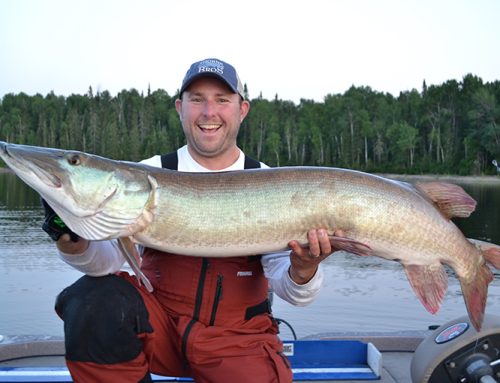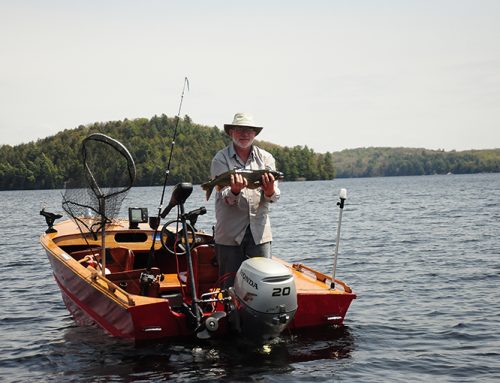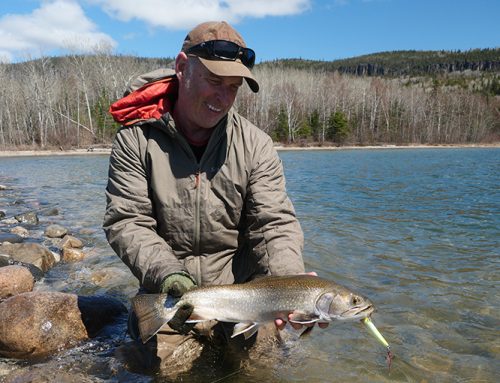
Using live bait for muskie (aka sucker fishing) is a fall tradition that spans generations of angling. Although strategies and equipment have evolved, one fact remains: muskies eat live suckers.
I learned how to fish suckers from a good friend and fellow muskie nut on Eagle Lake in northwestern Ontario. Applying the strategy and rigging for my home water of Lac Seul was an easy transition.
Only suckers
The star of the show is the live bait itself, the sucker. I’ve never seen or heard of anyone using anything other than suckers. Typically, where there’s a muskie fishery, there’s a bait shop nearby that has suckers in the fall. Not just any suckers — big ones.
Game plan
The biggest thing is presenting the sucker in a natural way. That essentially that means swimming freely. If the boat is moving too fast and dragging the sucker, it will never get hit. Sucker fishing means slowly and methodically covering key spots. Maximum boat speed is 0.5 mph. Basically crawling.
Moving slowly limits how much water you cover. This fact drives my strategy of only fishing the best parts of the best spots. I might only cover a 50-yard stretch of a reef or neckdown area, but I’ll cover it slowly and thoroughly. I use the trolling motor to pause right over spot-on-spot positions.
Floats or no floats?
There are two ways to present live bait, one is under a slip-float and the other is ‘free-range’ without a float. Free-range suckers can be somewhat controlled with the amount of line out, but it can still be hard to keep track of where they are exactly.
If two or more suckers are out, I prefer using slip floats. The float acts as a strike indicator. It lets you see where your suckers are, and it lets you set bait depth.
Some suckers are swimmers and like to roam around. The float makes it easy to move rods around in the rod holders to avoid lines getting tangled when a sucker decides to go for a swim. Staggering the amount of line out on each rod helps prevent tangles, too.
When a float goes down, or a clicker goes off, get on the rod right away. I fish with the clicker on and the reel on free spool. Engage the reel and set the hook when the muskie is swimming or facing away from you. Acting fast ensures the muskie doesn’t swallow the sucker and the rig.
I’ve seen ‘tough’ sucker trips, too. When muskies are not biting and are difficult to entice with or without live bait. But adding sucker fishing to your autumn muskie repertoire is definitely worth the effort.
Cast while you sucker-soak
One multi-angler strategy combines live bait fishing with casting. The theory is that casting towards structure will entice a follow, thereby drawing a muskie to your sucker. Keep in mind Ontario’s one line per person law.
Originally published in the August 2022 issue of Ontario OUT of DOORS






What if you can’t afford a $4000 trolling motor plus electronics?